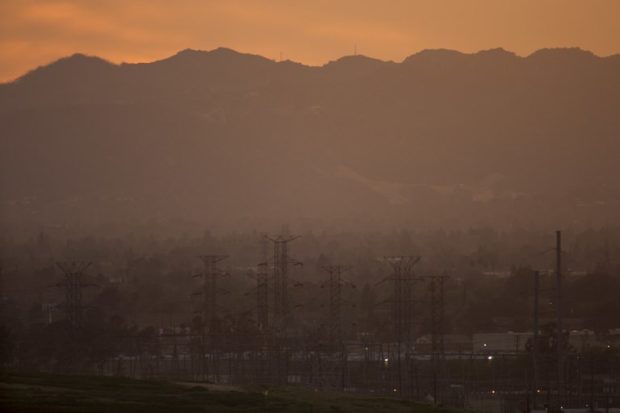
Hazy air covers the San Fernando Valley on March 10, 2017 in Sun Valley, California. Atmospheric carbon dioxide levels reached a new record high in 2016 and have continued to climb in the first two months of 2017, scientists at the National Oceanic and Atmospheric Administration (NOAA) reported. David McNew/Getty Images/AFP
The concentration of carbon dioxide (CO2) in the atmosphere has hit a new high, the UN said Monday, warning that drastic action is needed to achieve targets set by the Paris climate agreement.
“Concentrations of carbon dioxide in the atmosphere surged at a record-breaking speed in 2016,” the World Meteorological Organization said.
“Globally averaged concentrations of CO2 reached 403.3 parts per million in 2016, up from 400.00 ppm in 2015 because of a combination of human activities and a strong El Nino event,” it said.
The Greenhouse Gas Bulletin, the UN weather agency’s annual flagship report, tracks the continent of dangerous gasses in atmosphere in the post-industrial era (since 1750).
The report also said that the last time Earth experienced similar CO2 concentration rates was three to five million years ago, when the sea level was up to 20 meters (66 feet) higher than now.
“Without rapid cuts in CO2 and other greenhouse gas emissions, we will be heading for dangerous temperature increases by the end of this century, well above the target set by the Paris climate change agreement,” WMO chief Petteri Taalas said in a statement.
The historic agreement approved by 196 countries two years ago is facing renewed pressure following US President Donald Trump’s decision to quit the accord.
But nations are set to press on with the task of implementing it at climate talks in Bonn next week.
“The numbers don’t lie. We are still emitting far too much and this needs to be reversed,” the head of UN Environment Erik Solheim said in a statement, reacting to the new report.
“What we need now is global political will and a new sense of urgency.”
The Greenhouse Gas Bulletin tracks concentrations of gasses in the atmosphere, rather than emissions with data compiled from a monitoring station in Mauna Loa, Hawaii.